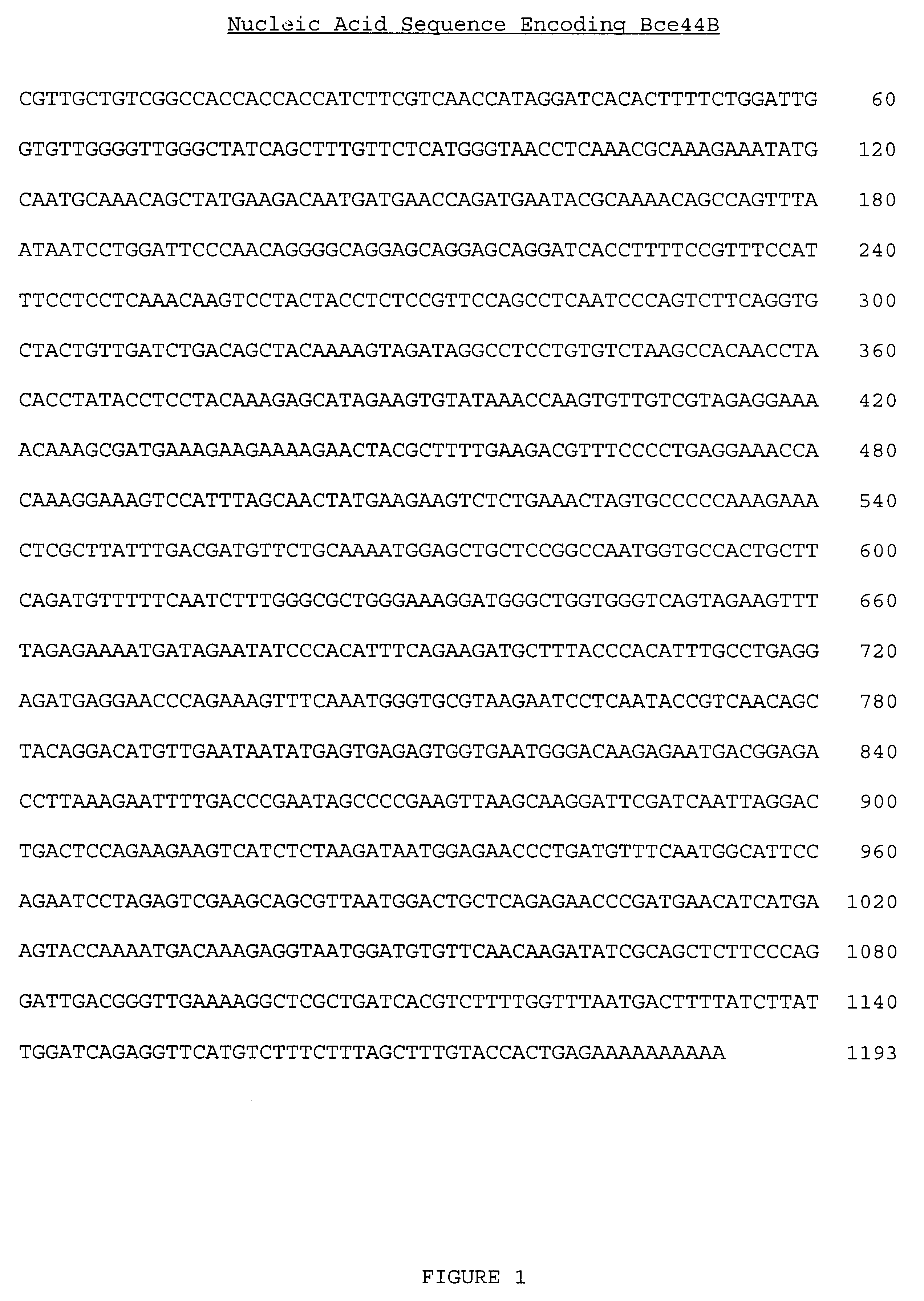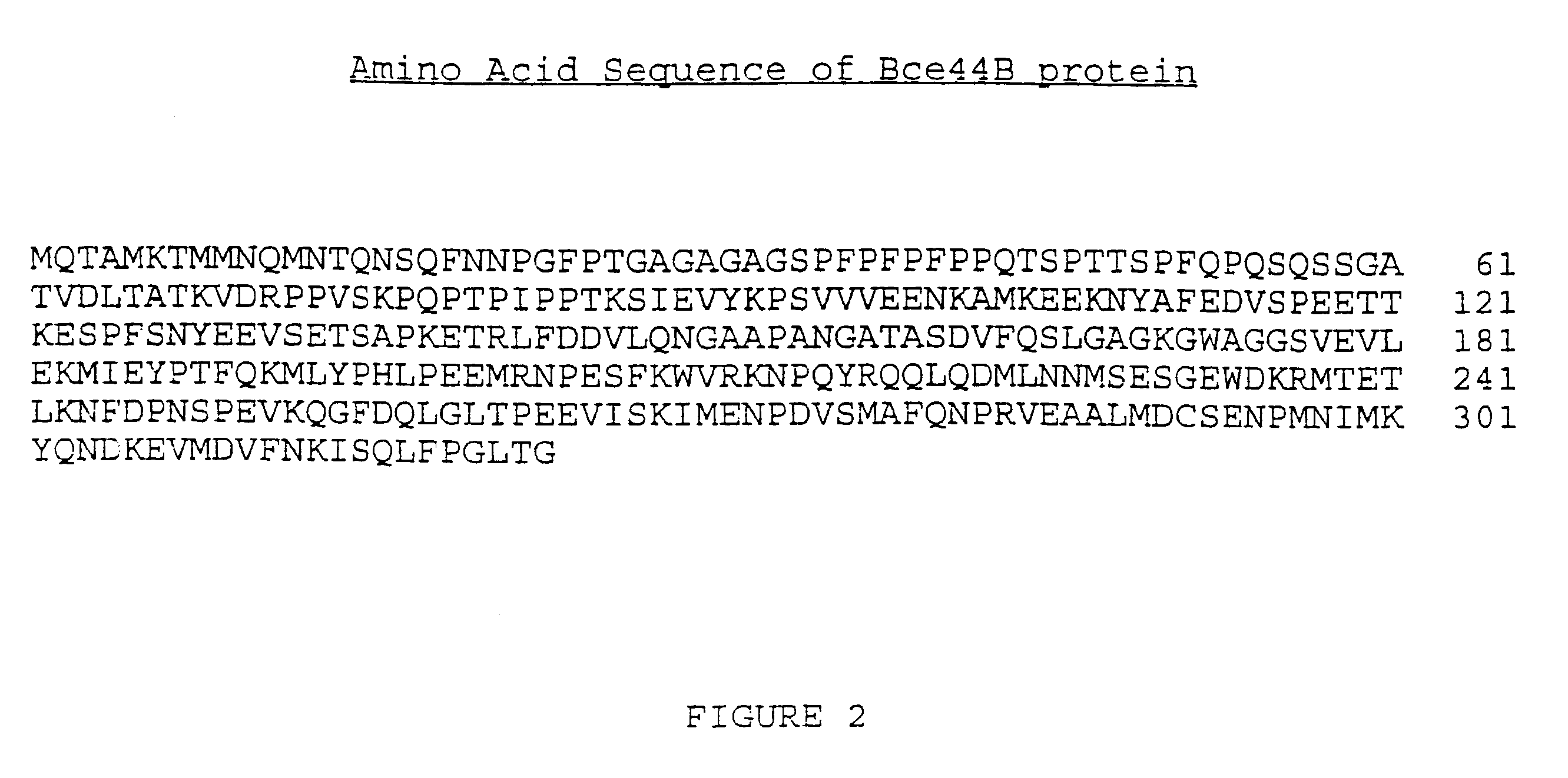Enhanced transport with a plastid membrane transport protein
a plastid membrane and protein technology, applied in the field of enhanced transport of substances, can solve the problems of inability to know the components limited knowledge of plastid transport proteins, and inability to characterize such proteins, so as to achieve a higher, more efficient level of protein translocation, and enhance the efficiency of molecular translocation.
- Summary
- Abstract
- Description
- Claims
- Application Information
AI Technical Summary
Benefits of technology
Problems solved by technology
Method used
Image
Examples
example 1
Subfractionation of chloroplasts and purification of chloroplast envelopes
Intact chloroplasts were purified from pea seedlings, Pisum sativum (cv. Improved Laxton's), as described by Bartlett et al. (1982) Methods in Chloroplast Molecular Biology, (Edelman, M., Hallick, R. B. and Chua, N. H., eds.) pp. 1081-1091 Elsevier Biomedical Press, Amsterdam, or Cline et al. (1985) J. Biol. Chem. 260:3691. The growth conditions were identical to those described previously (Ko and Cashmore (1989) EMBO J. 8:3187). Pea seedlings from 200 grams of seeds were grown for 9-11 days in growth chambers set at 21.degree. C. under fluorescent lighting with 16:8 h light:dark photoperiod. Pea seedlings were harvested and homogenized in cold grinding buffer (50 mM HEPES-KOH pH 7.6, 0.33 M sorbitol, 0.05% bovine serum albumin, 0.1% ascorbate, 1 mM magnesium chloride, 1 mM manganese chloride, 2 mM Na.sub.2 EDTA) for 2-3 brief blendings of 5-10 sec at a setting of 5-6 on the Polytron Homogenizer. Percentages f...
example 2
Antibody preparations
Monospecific type G immunoglobulins used in the various immunological experiments were prepared using female New Zealand white rabbits according to Chua et al. (1982) In: Methods in Chloroplast Molecular Biology (Edelman, M., Hallick, R. B., Chua, N. H., eds.) pp.1063-1080. Elsevier Biomedical Press, Amsterdam. The polyclonal antiserum initially used in the identification of cDNA clones encoding Com44 / Cim44 (Bce44B is a member of the Com44 / Cim44 protein family) was raised against total pea chloroplast envelope proteins as previously described in Ko, K. et al. (1992) J. Biol. Chem. 267:2986. Antibodies against the COOH terminus of the tomato 44 kDa envelope protein (Tce44) and both NH.sub.2 and COOH termini of the Brassica napus 44 kDa envelope protein (Bce44B) were generated as outlined in Wu et al. (1994) J. Biol. Chem. 269:32264. These proteins were generated using the T7 RNA polymerase-expressing bacterial overexpression system. The plasmid vector pGEMEX-1 (P...
example 3
Identification of CDNA clones encoding 44 kDa proteins
Construction of the Brassica napus (cv. Topas) cDNA expression library and the strategy for immunoscreening the B. napus cDNA expression library were performed as described in Ko, K. et al. (1992) J. Biol. Chem. 267:2986 and Ko, K. et al., (1994) Plant Physiol. 104:1087. The cDNA expression library was constructed in the phage vector .lambda.gt22 (Promega) using polyadenylated RNA isolated from 21 day old Brassica napus (cv. Topas) developing seeds. The synthesis of cDNA was facilitated using a kit purchased from Promega. The growth and propagation of the cDNA library was performed according to standard methods such as the ones described in Molecular Cloning: A Laboratory Manual (Sambrook et al. (1989) Cold Spring Harbor Laboratory, Cold Spring Harbor, N.Y.). The cDNA inserts were retrieved by an EcoRI-NotI digestion from the selected appropriate recombinant phage DNA and subcloned into pGEM 11Z (Promega) for expression in JM109(...
PUM
| Property | Measurement | Unit |
|---|---|---|
| pH | aaaaa | aaaaa |
| apparent molecular mass | aaaaa | aaaaa |
| temperature | aaaaa | aaaaa |
Abstract
Description
Claims
Application Information
 Login to View More
Login to View More - R&D
- Intellectual Property
- Life Sciences
- Materials
- Tech Scout
- Unparalleled Data Quality
- Higher Quality Content
- 60% Fewer Hallucinations
Browse by: Latest US Patents, China's latest patents, Technical Efficacy Thesaurus, Application Domain, Technology Topic, Popular Technical Reports.
© 2025 PatSnap. All rights reserved.Legal|Privacy policy|Modern Slavery Act Transparency Statement|Sitemap|About US| Contact US: help@patsnap.com



